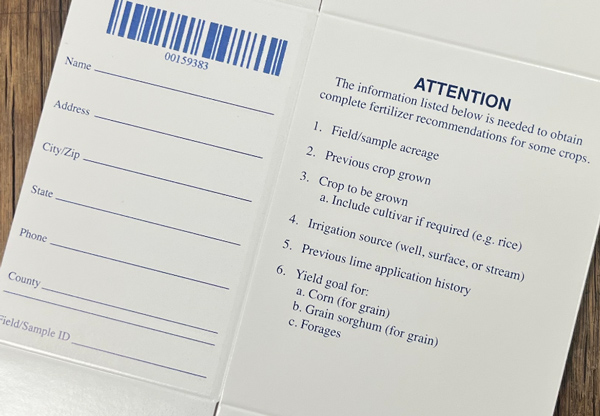Managing Around High Fertilizer Prices – Know the Code!
Managing Around High Fertilizer Prices – Know the Code!
Okay, so you’ve followed the first two bits of advice. You’re not going to waste your time and money on fertility snake oils, and you’ve managed to accurately get your soil sampling done. Now, it’s time to turn those samples in to us!

This might seem like an unimportant step in the process, but it’s a very big part of ensuring you get an appropriate recommendation. So, come prepared.
Why is a soil test important? What do the results show?
Not all crops need and use nutrients in the same way or at the same rate. As such, the soil lab’s report gives recommendations based on how we “code” the submission. With the exact same dirt, there are different recommendations for a soybean field vs. a pecan orchard vs. a garden vs. a golf course green and so on.

Example of soil report information.
Let’s focus on differentiating between grazed pastures and hayfields.
A soil test recommendation for a pasture is given with the intent to get those P and K levels up to optimum from where they currently are.
Hayfield soil analysis, on the other hand, must account for the removal of nutrients via the hay bale AND the current levels in the soil. That recommendation will work to get P and K levels to optimum over the course of several years AND replace what’s being removed. That brings us to the next thing.
You need an accurate record of what you’re removing. A P and K recommendation for a 2 ton/acre predicted hay yield will be quite different than a 4 ton/acre predicted. Know your hay bales’ weights and how many you make, on average, for any hayfield samples.
If I take a sample from a field of fescue, I could get a recommendation of 60-40-80 (grazed pasture) or 120-60-180 (3 ton/acre hayfield) solely depending on how the sample is coded when it’s sent to the lab. That’s the difference between approximately $111/acre or $225/acre in fertilizer cost. Know your average yields. Even within the categories of grazed pastures and hayfields, there are also differences in codes (and therefore recommendations) for cool season vs. warm season grasses and for those with legumes and without legumes.
Work with us to make sure the sample is coded correctly. It matters!
For more info, view our page How to Submit a Soil Sample